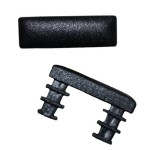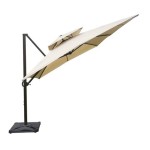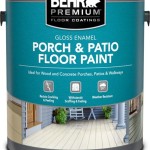How to Make Misters For Your Patio
Creating a comfortable outdoor space is often desirable, particularly during warmer months. Patio misters can significantly reduce ambient temperature, making patios more enjoyable for relaxation and entertainment. Constructing personal mister systems is a manageable project that can be tailored to specific patio dimensions and personal preferences. This article provides a comprehensive guide on how to build efficient and effective misting systems for patios.
Planning and Material Gathering
The initial stage of constructing a patio mister system involves careful planning and the acquisition of necessary materials. The scope of the project will largely depend on the size of the patio area to be cooled, desired mist density, and available water pressure. A comprehensive list of materials ensures a smooth and efficient construction process.
First, determine the area to be covered by the misting system. Measure the length and width of the patio to calculate the required length of misting tubing. Account for any curves, corners, or obstructions that might affect the tubing layout. This will ensure sufficient tubing to cover the desired area effectively.
Next, assess the available water pressure. Most misting systems require a water pressure of at least 40 PSI (pounds per square inch) to function effectively. Lower water pressure can result in inadequate misting or dripping. If the water pressure is insufficient, a booster pump may be necessary to increase it to the required level. A simple water pressure gauge, available at most hardware stores, can be used to measure the water pressure at the outdoor faucet.
The core components of the misting system include the misting tubing, misting nozzles, and fittings. Misting tubing is typically made of flexible polyethylene or nylon, which is resistant to UV degradation and can withstand the water pressure required for misting. It is recommended to select high-quality tubing to minimize the risk of leaks or bursts. Misting nozzles are available in various sizes and flow rates, influencing the fineness of the mist and the rate of water consumption. Choose nozzles that are appropriate for the available water pressure and the desired cooling effect.
Fittings are used to connect the misting tubing to the water source and to join sections of tubing together. Common fittings include T-connectors, elbow connectors, and end plugs. Select fittings that are compatible with the chosen misting tubing and that create a secure, leak-proof seal. A water filter is highly recommended to prevent debris from clogging the misting nozzles. This filter should be installed between the water source and the misting system to remove sediment and other particles that can impair nozzle performance. A timer can be integrated into the system to automatically control the misting duration and frequency. This can conserve water and improve convenience. Finally, mounting hardware, such as zip ties, clamps, or hooks, will be needed to secure the misting tubing to the patio structure. Ensure the mounting hardware is appropriate for the material of the patio structure and can withstand the weight of the tubing and water.
A suggested material list for a basic patio misting system is as follows: Misting tubing (length determined by patio size), Misting nozzles (number determined by desired mist density), T-connectors (number dependent on nozzle placement), Elbow connectors (as needed for corners), End plugs (for terminating the tubing), Water filter (one), Timer (optional), Mounting hardware (zip ties, clamps, or hooks), Tubing cutter, Teflon tape, and a Water pressure gauge (if unsure of water pressure).
Assembly and Installation of the Misting System
Once all the necessary materials are gathered, the assembly and installation process can begin. This phase involves connecting the components, securing the tubing to the patio structure, and testing the system for leaks and proper functionality. Careful attention to detail is critical to ensure a durable and effective misting system.
The first step is to connect the water filter to the outdoor faucet or water source. Use Teflon tape on the threads of the faucet and filter to create a watertight seal. Tighten the connection securely, but avoid over-tightening, which can damage the threads. Next, attach the misting tubing to the outlet of the water filter. Use a compression fitting or a hose clamp to secure the tubing to the filter outlet. Again, ensure a tight seal, but avoid over-tightening.
Lay out the misting tubing along the desired path on the patio. Use the previously determined measurements to ensure the tubing is long enough to cover the entire area. Cut the tubing to the required length, using a tubing cutter or a sharp utility knife. Make clean, straight cuts to ensure proper fitting of the connectors. Install the misting nozzles along the tubing at the desired intervals. The spacing between nozzles will depend on the desired mist density and the water pressure. A common spacing is between 12 and 24 inches. Use T-connectors to attach the nozzles to the tubing. Push the tubing firmly into the T-connectors until they are fully seated. If necessary, use pliers to gently squeeze the connectors to ensure a secure fit. At the end of each run of tubing, install an end plug to prevent water leakage. Push the end plugs firmly into the tubing until they are fully seated.
Secure the misting tubing to the patio structure using the chosen mounting hardware. Zip ties are a convenient option for attaching the tubing to railings, posts, or other vertical supports. Clamps can be used to secure the tubing to solid surfaces, such as walls or ceilings. Hooks can be used to suspend the tubing from overhead structures. Ensure the mounting hardware is securely attached to the patio structure and that the tubing is firmly held in place. The tubing should be positioned high enough to prevent people from bumping into it, but low enough to provide effective misting.
Once the misting system is fully assembled and installed, turn on the water supply and check for leaks. Inspect all connections, including the water filter, tubing connections, and nozzle connections. Tighten any loose connections or replace any damaged fittings. If the system includes a timer, program the timer according to the desired misting schedule. Start with short misting intervals, such as 15 minutes every hour, and adjust the schedule as needed to achieve the desired cooling effect. Monitor the misting performance to ensure the nozzles are producing a fine mist and that the water is distributed evenly across the patio area. Adjust the nozzle spacing or water pressure as needed to optimize the misting performance.
Maintenance and Troubleshooting
Proper maintenance is essential for ensuring the longevity and optimal performance of the patio misting system. Regular cleaning and inspection can prevent clogs, leaks, and other issues that can impair the system's effectiveness. Common problems can be identified and addressed through simple troubleshooting steps.
Regularly inspect the misting nozzles for clogging. Debris and mineral deposits can accumulate in the nozzles, reducing or blocking the flow of water. To clean the nozzles, remove them from the tubing and soak them in a solution of vinegar and water. Use a small brush or needle to remove any stubborn debris. Rinse the nozzles thoroughly with clean water before reinstalling them. The water filter should be cleaned or replaced regularly, depending on the quality of the water supply. Inspect the filter cartridge for sediment buildup and replace it when it becomes clogged. Follow the manufacturer's instructions for cleaning or replacing the filter cartridge. Inspect the misting tubing for leaks or damage. Replace any sections of tubing that are cracked, brittle, or leaking. Ensure all connections are tight and secure. Periodically flush the misting system to remove any accumulated debris or mineral deposits. Disconnect the end plugs and run water through the system for several minutes until the water runs clear. This will help to prevent clogs and maintain optimal misting performance.
If the misting system is not producing a fine mist, several factors could be responsible. Low water pressure is a common cause of inadequate misting. Check the water pressure at the outdoor faucet and ensure it is within the recommended range for the misting system. If the water pressure is too low, consider installing a booster pump. Clogged nozzles can also prevent the system from producing a fine mist. Clean the nozzles as described above to remove any debris or mineral deposits. Kinked or blocked tubing can restrict the flow of water to the nozzles. Inspect the tubing for any kinks or obstructions and repair or replace the affected sections. If water is dripping from the nozzles instead of producing a fine mist, the water pressure may be too low, or the nozzles may be damaged. Check the water pressure and clean or replace the nozzles as needed.
In colder climates, protect the misting system from freezing temperatures. Drain the system completely before the onset of freezing weather to prevent damage to the tubing, nozzles, and fittings. Disconnect the water filter and store it indoors to prevent it from freezing. Cover the outdoor faucet to protect it from freezing temperatures. When the weather warms up, reconnect the system and test it for leaks and proper functionality. By following these maintenance and troubleshooting tips, the patio misting system can provide years of reliable cooling and comfort.

Diy Cooling Misting System Summer Patio Porch Misters Water

Misting Systems Diy Mist Kits Outdoor Patio Cooling

Diy Cooling Misting System Summer Patio Porch Misters Water

Diy Cooling Misting System Summer Patio Porch Misters Water

How To Install A Diy Patio Mister System Complete Guide

Portable Diy Mister System Beat The Heat No Hose Needed

Diy Water Misting System 4 Steps With Pictures Instructables

Misting Systems Diy Mist Kits Outdoor Patio Cooling

Diy Cooling Misting System Summer Patio Porch Misters Water

How To Install An Outdoor Misting System Diy Youtube








